High quality image provided modern TVs largely accessible through the use of LED backlighting. LED TVs at one time made a real revolution in the television electronics market. The new backlight has greatly improved the quality of color reproduction and image brightness. LEDs emit intense, uniform light, have a long lifespan and boast high environmental friendliness (do not contain mercury and other harmful substances).
At the moment, all major TV manufacturers use one of two LED lights: DirectLED or EdgeLED. Between themselves, they differ in the number and geometric arrangement of LEDs. Depending on how the LEDs are located, the characteristics of the matrix also change. Each backlight has some advantages and disadvantages. That is why when choosing an LED TV, you need to decide what kind of backlight you need: DirectLED or EdgeLED? In this article, we will analyze the features of each of them, as well as find out their strengths and weaknesses.
EdgeLED backlight
In the case of using this backlight, all LEDs are placed on the sides of the screen. Sometimes it is called side LED backlight. The main advantage when using EdgeLED backlighting is the ability to make an ultra-thin TV. Today, there is a clear trend towards an increase in the popularity of ultra-thin TVs, so EdgeLED backlighting is used quite often. The location of the LEDs on the sides also allows you to achieve high energy efficiency.
If you choose a DirectLED or EdgeLED TV, then the side-lit model will cost a little more. This is due to the fact that EdgeLED TVs use a special reflective surface, the task of which is to distribute the backlight as evenly as possible and avoid brightness drops. Of the minuses of such a backlight, one can single out the presence of light at the edges of the screen. If you reproduce a snowy landscape on a TV, then near the edges of the screen the snow will be brighter than in the middle.
In dark scenes, the light effect can also be clearly visible. This is due to the fact that all the LEDs are located around the perimeter of the screen and it is logical that the maximum degree of brightness is near the edges of the screen. Different TVs have different manifestations of backlight, so you will surely be able to find a model with minimal differences in picture brightness. If the TV has a local dimming function, then the problem with light is practically reduced to zero. When choosing a DirectLED or EdgeLED TV, consider the benefits of edge lighting.
Advantages of EdgeLED:
very thin matrix and therefore a thin TV good level contrast ratio relatively high brightness
EdgeLED Disadvantages:
problems with backlight uniformity in some modelsglare at the edges of the screen (not visible on all models)
Backlight Direct LED
To determine which backlight is better, DirectLED or EdgeLED, you need to understand the benefits of backlighting. DirectLED backlighting implies the location of LEDs over the entire area behind the matrix. In this case, local dimming technology is very conveniently and effectively used, when the processor controls the brightness level of individual groups of LEDs. This allows you to increase the level of contrast, and also achieves good uniformity of the backlight.
Benefits of DirectLED:
high level contrast ratiouniform illuminationhigh level of brightnessno glare at the edges
Disadvantages of DirectLED:
increased matrix thicknessincreased power consumptioncomparatively high input lag
The high-quality image that modern TVs provide is largely accessible due to the use of LED backlighting. Depending on how the LEDs are located, the characteristics of the matrix also change. Each backlight has some advantages and disadvantages. First you need to understand what the backlight on LCD TVs is. The image on the LCD TV screen is obtained as a result of the passage of polarized light from the backlight.
Let's mention 2 types of backlight:
CCFL (cold cathode) - thin fluorescent lamps located behind the matrix.
Advantages: illumination uniformity.
Flaws: large thickness, power consumption, the impossibility of local control of the backlight.
LED - light emitting diodes. Currently, cold cathode televisions have been almost completely replaced.
Advantages: it is possible to make very thin TVs, low power consumption, the ability to locally control the backlight.
Flaws: backlight unevenness. Due to the fact that the LEDs are located at regular intervals (scattering and many other factors make their influence), in almost 100% of cases LCD TVs with LED backlighting have uneven illumination (clouding) - when areas that should remain black have a different grayscale. The problem is partially solved by segmented LED backlighting.
LED-backlight, in turn, is divided into 2 types:
"Regional"(it is also EDGE-LED, or as it is also called “side”, when the LEDs are located at the edges of the matrix, their light hits the diffuser and is scattered). Since LCD pixels do not emit light on their own, they require a backlight that is always on. Enclosed crystals still transmit light, so it is impossible to achieve low black levels (the lower the better) and contrast transitions in edge-lit systems.
« Carpet» (Full HD LED, LED Pro, Direct LED). In TVs where "carpet" backlighting is used, the LEDs are located directly behind the matrix. This improves backlight uniformity and introduces segmented backlight control, where individual diodes that are responsible for areas on the screen can dim the brightness depending on the scene on the screen.
At the moment, all major TV manufacturers use one of the two LED backlights mentioned above: Direct LED or Edge LED. Between themselves, as already mentioned, they differ in the number and geometric arrangement of LEDs. Depending on how the LEDs are located, the characteristics of the matrix also change. Each backlight has some advantages and disadvantages. That is why when choosing TV LED you need to decide what kind of backlight you need: Direct LED or Edge LED? And now let's try to consider in more detail the features of each of them, and at the same time also find out their strengths and weaknesses.
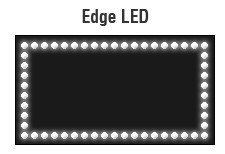
In the case of using this backlight, all LEDs are placed on the sides of the screen. Sometimes it is called side LED backlight. The main advantage when using EdgeLED backlighting is the ability to make an ultra-thin TV. Today, there is a clear trend towards an increase in the popularity of ultra-thin TVs, so Edge LED backlighting is used quite often. The location of the LEDs on the sides also allows for high energy efficiency.
If you choose Direct LED or Edge LED TV, then the side-lit model will cost a little more. This is due to the fact that TVs with Edge LED backlight use a special reflective surface, the task of which is to distribute the backlight as evenly as possible and avoid brightness drops. Of the minuses of such a backlight, one can single out the presence of light at the edges of the screen. If you reproduce a snowy landscape on a TV, then near the edges of the screen the snow will be brighter than in the middle.
In dark scenes, the light effect can also be clearly visible. This is due to the fact that all the LEDs are located around the perimeter of the screen and it is logical that the maximum degree of brightness is near the edges of the screen. Different TVs have different manifestations of backlight, so you will surely be able to find a model with minimal differences in picture brightness. If the TV has a local dimming function, then the problem with light is practically reduced to zero. When choosing a Direct LED or Edge LED TV, consider the benefits of side lighting.
Advantages of Edge LED:
very thin matrix and therefore a thin TV
good contrast level
relatively high brightness
more durable because diodes have good heat dissipation compared to backlights.
Edge LED Disadvantages:
problems with backlight uniformity in some models
glare at the edges of the screen (not visible on all models)

To determine which backlight is better, Direct LED or Edge LED, you also need to understand the benefits of backlighting. Direct LED backlighting implies the location of LEDs over the entire area behind the matrix. In this case, local dimming technology is very conveniently and effectively used, when the processor controls the brightness level of individual groups of LEDs. This allows you to increase the level of contrast, and also achieves good uniformity of the backlight.
Advantages of Direct LED:
high level of contrast
uniform illumination
high brightness level
no glare at the edges
Disadvantages of Direct LED:
increased matrix thickness
increased power consumption
relatively high * input lag
conclusions
Which backlight is better, Direct LED or Edge LED? Both one and the other have good performance. If the thickness of the TV does not matter to you, and you are not going to connect the TV to the computer for games, then choose Direct LED. If you are a fan of thin TVs, then perfect choice will be the purchase of an Edge LED TV. It is better to independently compare both backlights in the store and choose which is best for you, Direct LED or Edge LED. According to users, the choice of backlight is largely a matter of taste.
Friends! Now that you know everything you need to know about backlights and their features, choosing a TV in our online store LED-Expert, you will be much easier to do for yourself right choice!
Note .* - input-lag- this is a characteristic that shows the time it takes for the TV electronics to process the received signal and display it on the screen. Do not confuse this characteristic with the response time, which is a characteristic of the matrix. The response time of the matrix shows the minimum time required for a pixel to change its brightness.
Today, LED backlighting for many of the revolutionary advances in TV manufacturing has ended up being an added feature that often makes it difficult to choose one or the other, as you need to think about the benefits of each individual option in order to make an informed decision.
Indeed, when buying a TV, you don’t want to end up making the mistake of buying something that actually represents yesterday’s technology, which makes no sense to use in modern realities. Fortunately, there are actually no serious difficulties in this matter, and its importance is greatly exaggerated.
Advantages and disadvantages of LED per se
Each option LED technology has its own advantages, namely:
- Higher degree of economy.
- The ability to create TVs with fairly thin screens.
- Complete absence of mercury content in LEDs.
These advantages are considered in relation to other backlighting technologies that have previously been used in other types of TVs.
It is worth noting a few disadvantages that are typical for all types of LED backlighting:
- Initially backlight of this type does not improve LCD viewing angles.
- Thinner, side-lit models may suffer from uneven screen illumination.
- LED backlighting can eventually cause unwanted local dimming of the picture on the screen.
Of course, such shortcomings in the vast majority of cases are eliminated in various models monitors and televisions, as technology is constantly improving. At the same time, you need to correctly understand that far from only one backlight affects the quality of the picture on the TV.
The high image quality that modern TVs allow you to watch could appear largely due to the fact that developers began to use LED backlight technology. At one time, the appearance of LED TVs could make a real revolution in the market, because new backlight provided a significant improvement in color quality, and also significantly increased the brightness of the image. However, many people have a well-founded question about which is better to choose - Edge LED or Direct LED. After all, each option has its own advantages and disadvantages that must be considered in the selection process.
What are their main differences?
To date, all existing major TV manufacturers use only two types of backlights - Edge LED or Direct LED.  Among themselves, they differ in the number, as well as in the geometric arrangement of the LEDs. Depending on how the latter are located, the characteristics of the matrix may change, while each type of backlight has its own characteristics and advantages. It is for this reason that when choosing a TV, in each individual case, you need to weigh all these points and think about what is still better to choose - Edge LED or Direct LED. Next, we will look at the features of each option.
Among themselves, they differ in the number, as well as in the geometric arrangement of the LEDs. Depending on how the latter are located, the characteristics of the matrix may change, while each type of backlight has its own characteristics and advantages. It is for this reason that when choosing a TV, in each individual case, you need to weigh all these points and think about what is still better to choose - Edge LED or Direct LED. Next, we will look at the features of each option.
edge
The use of this backlight provides for the distribution of LEDs on the sides of the screen. In this regard, this technology is often referred to as side lighting.
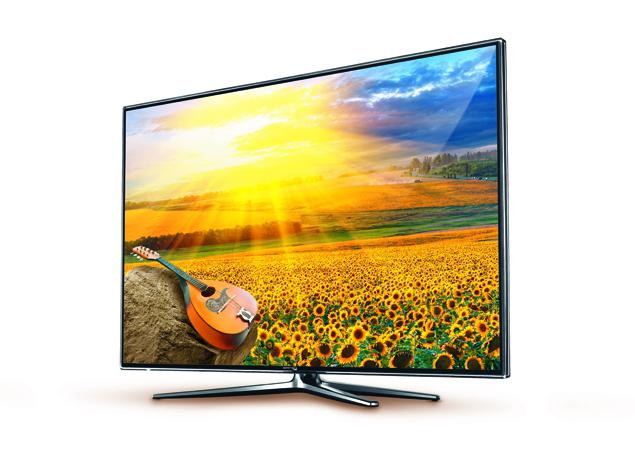
Benefits of Edge
Pros this technology has several:
- Extremely thin matrix, and in connection with this - the TV itself.
- Relatively high brightness.
- Acceptable level of contrast.
The main advantage of using this technology is that the TV can eventually become ultra-thin, which is often the deciding factor in favor of choosing such devices. To date, a clear trend has been noticed in the direction that, when choosing between Edge LED or Direct LED, they often prefer the first option, for the reason that modern manufacturers produce ultra-thin screens with this technology.
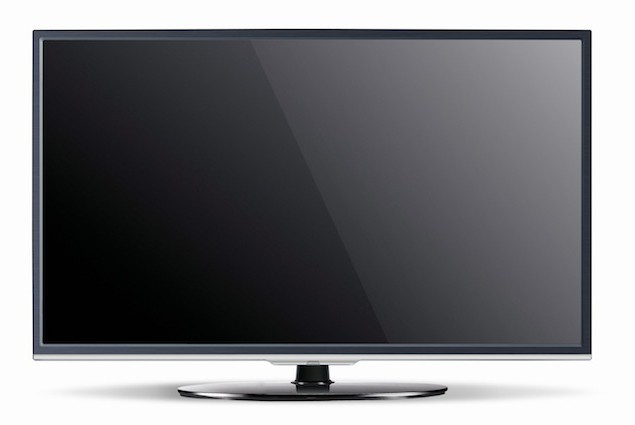
Also worth noting is the fact that the lateral distribution of the LEDs ensures a high degree of energy efficiency.
Edge Disadvantages
The technology also has certain disadvantages:
- Lights on the edges of the screen.
- Issues related to backlight uniformity in certain models.
If you make a choice in favor of Edge LED, then you should immediately be prepared for the fact that the cost of such a TV will be somewhat higher, since they use a specialized reflective surface, which is necessary for extremely even distribution of the backlight, as well as eliminating any noticeable brightness differences. If we talk about what the disadvantages of this technology are, it is also worth highlighting the presence of certain highlights at the edges of the screen, and when playing, for example, a bright snowy landscape near the edges of the screen, the snow will be much brighter compared to the image in the center.
In dark scenes, you can also quite often pay attention to the effect of a kind of backlight, and, in particular, this is due to the fact that the LEDs are located around the perimeter of the screen, and the brightness in this area is quite logical. It is worth noting the fact that different TVs exhibit light in different ways, so there is always the possibility that you will be able to find a device that has the lowest possible picture drops. If the TV has such a function as local dimming, then in this case you can completely forget about what glare is, and that they can spoil the mood from watching certain moments.
direct
The Direct LED backlight type provides for the distribution of LEDs over the entire area behind the matrix.
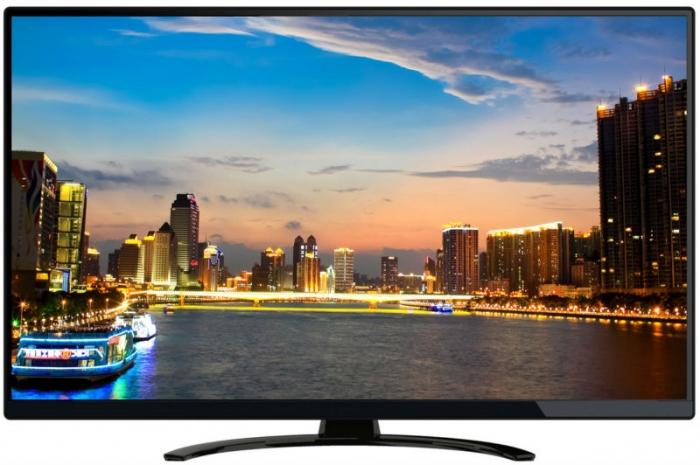
In this case, local dimming technology can be used extremely efficiently and quite conveniently, when the processor sets the brightness level of certain groups of LEDs, which increases the contrast level, while providing extremely uniform illumination.
Benefits Direct
Considering the advantages of Direct LED technology, it is worth highlighting the following:
- Uniform illumination.
- Sufficiently high level of contrast.
- Lack of light at the edges.
- Acceptable level of brightness.
Disadvantages Direct
Also backlight LED Direct has some disadvantages compared to its counterpart:
- Higher power consumption.
- Not such a thin matrix thickness.
- Relatively large Input Lag.
What to choose?
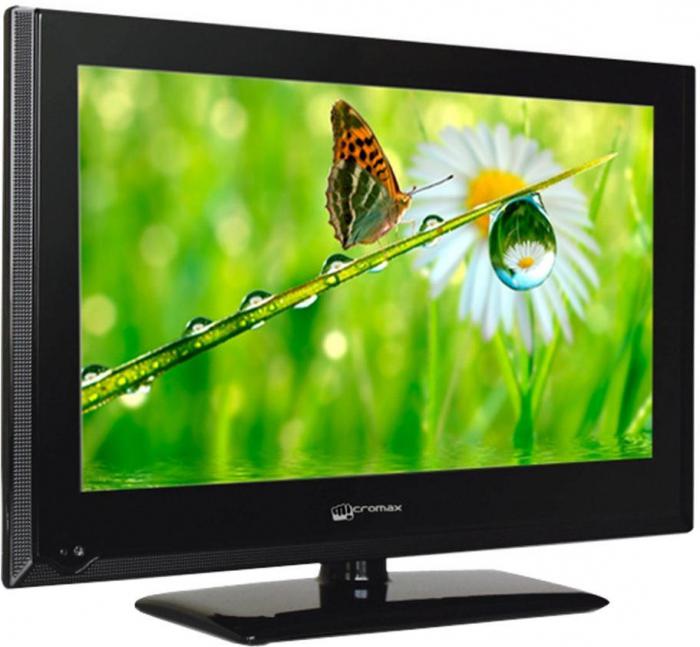
As mentioned above, there is no exact definition of which particular option is more relevant in a given situation. At the same time, you can pay attention to many factors, choosing between which option is more optimal - Direct LED or Edge LED: where better quality pictures where more energy is consumed, in the end which TV has more attractive design by itself.
Thus, if the thickness of the device does not matter to you, and moreover, you have no intention of using it as a monitor for various computer games, then the Direct backlighting technology is fine, but if you are a fan of exceptionally thin devices, then in this case, Edge is optimal choice. It is best to compare the performance of each backlight in the store yourself so that you can decide for yourself which particular option is more acceptable. According to users of such TVs, in the end, the choice of backlight is largely a matter of personal taste.
Discussion of screen backlights in TVs: Direct LED and Edge LED
In description specifications TV screens can meet the application various types screen backlight. Most major TV manufacturers use one of two LED backlights: Direct LED or Edge LED. Between themselves, they differ in the number and geometric arrangement of LEDs. Depending on how the LEDs are located, the characteristics of the matrix also change. Each backlight has some advantages and disadvantages. In this regard, when choosing an LED TV, you need to decide what kind of backlight you need: Direct LED or Edge LED? Let's try to analyze the features of each of them, as well as find out their strengths and weaknesses.
Backlight Direct LED
Direct LED - backlight, in which the LEDs are located in the area behind the matrix. To understand how it works, let's look at the following pictures.
Before us is a fragment of the backlight plate. The LEDs themselves are located inside the original "buttons", which are diffusers, for a more even distribution. luminous flux emitted by the LED. A conductor and an insulator are applied to the plate, as a rule - the LEDs are connected in series within the aisles of one bar and the failure of at least one leads to the fact that the entire bar stops glowing. Can they be easily replaced with regular strip LEDs? No.
This is how the LED strips are located inside the matrix container, if you remove it and all external diffusers. As you can see from the picture, the distance between the LEDs is about 8-12 cm (depending on the type of plate), so a good diffuser is simply necessary, otherwise there will be no uniform illumination, this is due to the large thickness of the matrix container compared to the Edge LED type, and therefore - and the whole TV.
Edge LED backlight
With side or edge illumination of the Edge LED, the LEDs are placed along the edges, more precisely, the ends, of a thick (about 8-10 mm) internal glass - a light distributor (it looks like ordinary frosted plexiglass). Usually two strips are used, located along the left and right ends of the matrix.
As can be seen from the photo, the LEDs themselves are located very close to each other, their connection type is mixed: all LEDs are divided into several sections, in the aisles of each section the connection is serial (to reduce the current load), all sections have a common "minus" and different "pluses", which are powered through a special control driver and key. In the event of failure of any element, protection will work and turn off the power to the backlight.
Such a bar gets very hot, so its substrate is metal, it is tightly attached to the metal container of the matrix, which serves as a heat sink. Replacing one failed element is very difficult, and often simply impossible, you have to change the entire bar.
Illumination with Edge LED backlight
Speaking about the disadvantages of the end-type backlight, many place a special emphasis on highlights. Lights - uneven glow, due to deformation of the diffuser or poor-quality design / assembly of the TV. talking in simple terms, the LED strip and the reflector (diffuser) must be strictly parallel over the entire contact area, otherwise part of the light flux from the LEDs will go nowhere and there will be a dark spot in this place, something like this:
Let's summarize.
Advantages of Direct LED backlight:
- Uniform illumination over the entire area.
- Less electricity consumption.
- Better maintainability.
- Lack of illumination.
- TVs are quite thick, at about 20mm, compared to other types.
- The brightness is good, but not as bright as the Edge LED.
- Thin matrix.
- Excellent brightness.
- Slightly more power consumption.
- Lights may appear.
If you are a fan of everything thin, take Edge LED - it looks stylish, just check carefully that there are no strong lights that interfere with a normal TV. However, if the TV does not stand, but hangs, and not even straight, but with an inclination - then look towards Direct LED, because the cases are not so strong and the deformation of the reflector with the subsequent appearance of light is quite possible.
Otherwise, everything is simple - look at the quality of the picture and take what you like.




